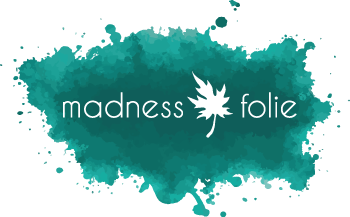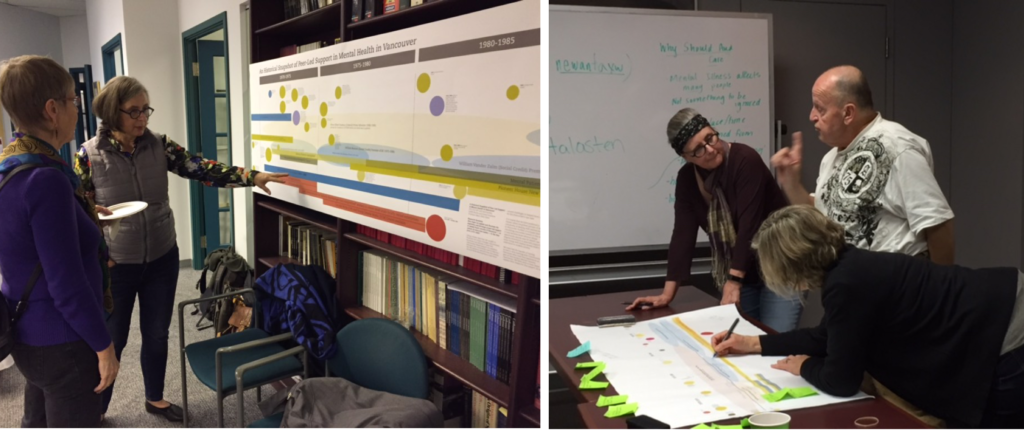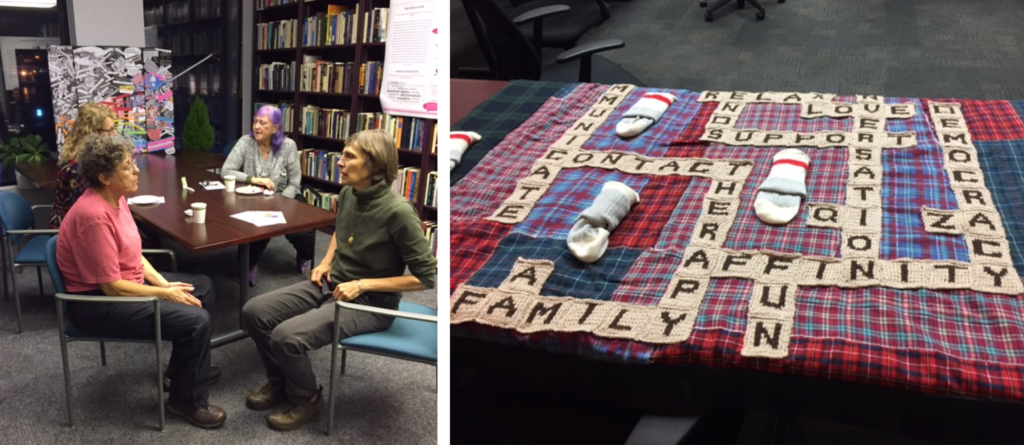We Did It
And indeed we did do it. Creating a living, activist mad history exhibit was a bold, possibly foolish, project for a group of historians, educators, and health policy specialists with no museum or gallery experience. We are delighted that our efforts will have another life on the pages of Madness Canada.
Mary Ellen Kelm and Megan Davies met over the summer of 2017 with a helpful community advisory group. Irit Shimrat, Sheila Gilhooly, John Hatfull, Sharon Burns, Helen Turbett – gave us a focus and mandate. Community historians told us that these four key points should be foundational in the exhibit:
- Passion: for making change, for the work and the organization; fuelled by anger and hope, empowerment through shared experience and the development of voice
- Worth: confidence, community, personhood, contribution, work, an analysis; experience gives authority, empowered through experience; life given meaning by the work and the contribution to community; being listened to; the value of experiential knowledge;
- Othering: by the mental health system, by mental health diagnoses; within organizations, the persistence of hierarchies and power differentials; the experience of de-funding because the money goes to the psychiatric system; an awareness that mental illness is both a consequence and cause of poverty and homelessness (chicken and egg image)
- Community: inclusion, democracy, commonalities, peer-support, mutual aid, self-help.
For all of us academics it was a professional expedition into the powerful realm of living history. The project pushed us out of our comfort zones as we rescripted scholarly prose and repackaged scholarly modes of presentation. Together, we revamped an existing scholarly script about the MPA into a series of character and project presentations and worked with each other and various gallery staff to ensure the language was engaging and appropriate.
Mary Ellen Kelm led a highly engaged group of Simon Fraser Liberal Studies students who worked with community historians Irit Shimrat, Arthur Giovinazzo, Sheila Gilhooly, Patty Gazzola to visually recreate aspects of MPA and its times. The connections the students made with the community historians were meaningful and one thanked Mary-Ellen for the, “opportunity to break out of the cloistered confines of the classroom into the “real” world through our community connected projects.”
As these images demonstrate the students produced timelines, soundscapes, collages, walking tours and a sensory quilt. Even though the community historians had vetted and reviewed each draft, the final moment of unveiling the students’ work was unforgettable. The student pieces may not have made it into the final Gallery Gachet exhibit but the work the students did, and the way they did it, honoured the MPA and the principles by which it ran. Review their project posters: Cathy’s Project Eileen’s Project Melissa’s Project Verna’s Project.
 Marina Morrow and Susan Heximer, converted to the power of history, designed an innovative education program that brought 30 community mental health workers into the gallery for a private evening viewing of the exhibit followed by highly productive small group work. You can learn more about the event and read their final report here.
Marina Morrow and Susan Heximer, converted to the power of history, designed an innovative education program that brought 30 community mental health workers into the gallery for a private evening viewing of the exhibit followed by highly productive small group work. You can learn more about the event and read their final report here.
Megan Davies spent 6 months accumulating shabby brown furniture, lamps, croqueted afghans, and many coffee cups – all of which shouted 1970s drop-in – and working to think and plan in 3 dimensions. Cindy Jiang kept our project budget in order, our focus on the politics of disability, and dazzled us with her talent for painting walls on a tight deadline and her capacity for fundraising from capitalists. Their shared work can be seen here.
And to acknowledge those who helped put it all together (in the gallery and on these pages) and our funders:
 Gallery space/ administrative support: Gallery Gachet, Graphic design: Willie Willis and Taliya Cohen, Audio/ video editing: Bryn Coates-Davies, Webpage design: Oliver Sutherns, Exhibit hosting: Candice Klein, Patty Gazzola, Arthur Giovinazzo, Woodwork: Alan Davies, Lighting and design: Jaime Burns, Recreated Artwork: Claude Breeze, Photography: Robert Penrose, Dorli Duffy, Tom Quirk, Gallery Gachet, Storage/ workspace: Lanny Beckman, Sharon Meen.
Gallery space/ administrative support: Gallery Gachet, Graphic design: Willie Willis and Taliya Cohen, Audio/ video editing: Bryn Coates-Davies, Webpage design: Oliver Sutherns, Exhibit hosting: Candice Klein, Patty Gazzola, Arthur Giovinazzo, Woodwork: Alan Davies, Lighting and design: Jaime Burns, Recreated Artwork: Claude Breeze, Photography: Robert Penrose, Dorli Duffy, Tom Quirk, Gallery Gachet, Storage/ workspace: Lanny Beckman, Sharon Meen.
Funding and in-kind contributions: Simon Fraser University, JJ Bean Coffee, Hattie Aiken, Ron Godfrey Paints, Robarts Center of Canadian Studies, York University, Home Depot, Transcontinental Textile Recycling, Staples, Sleggs Lumber (Saltspring).


